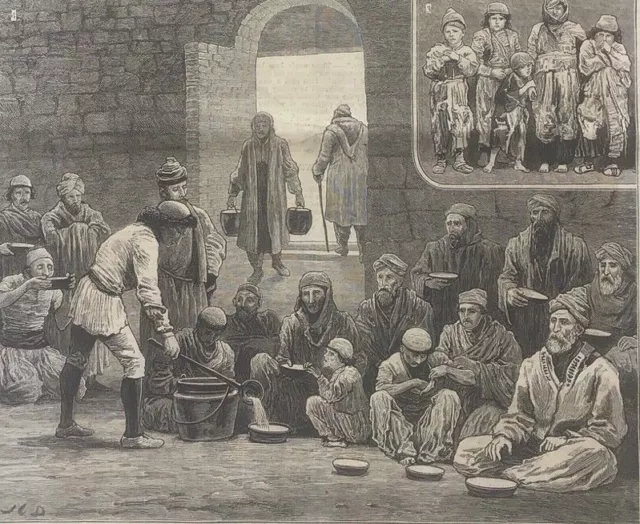1880 Engravings - Famine in Armenia - Soup Kitchen in Diyarbakir, Turkey
Diyarbakır From Wikipedia, the free encyclopedia Jump to navigation Jump to search "Amid" redirects here. For other uses, see Amid (disambiguation) . For other uses, see Diyarbakır (disambiguation) .
| Diyarbakır | |
|---|---|
| Metropolitan municipality | |
| Diyarbakır Location of Diyarbakır within Turkey Show map of TurkeyShow map of AsiaShow map of EarthShow all | |
| Coordinates: 37.91°N 40.24°E | |
| Country | Turkey |
| Region | Southeastern Anatolia |
| Province | Diyarbakır |
| Government | |
| • Mayor | Münir Karaloğlu [tr ] (trustee ) |
| Area | |
| • Metropolitan municipality | 15,058 km2(5,814 sq mi) |
| • Urban | 2,410 km2 (930 sq mi) |
| • Metro | 2,410 km2 (930 sq mi) |
| Elevation | 675 m (2,215 ft) |
| Population (2021 estimation)[1] | |
| • Metropolitan municipality | 1,791,373 |
| • Density | 120/km2 (310/sq mi) |
| • Urban | 1,129,218 |
| • Urban density | 470/km2 (1,200/sq mi) |
| • Metro | 1,129,218 |
| • Metro density | 470/km2 (1,200/sq mi) |
| Time zone | UTC+3 (TRT ) |
| Postal code | 21x xx |
| Area code | 412 |
| Licence plate | 21 |
| Website | [link removed by eBay] |
Diyarbakır (Turkish pronunciation: [diˈjar.bakɯr] ) is a city in Diyarbakır Province and the largest Kurdish -majority city in Turkey .[2]
Situated around a high plateau by the banks of the Tigris river on which stands the historic Diyarbakır Fortress , it is the administrative capital of the Diyarbakır Province of southeastern Turkey . It is the second-largest city in the Southeastern Anatolia Region . As of December 2021, the Metropolitan Province population was 1,791,373 of whom 1,129,218 lived in the built-up (or metro) area made of the 4 urban districts (Bağlar , Kayapınar , Sur and Yenişehir ).
Diyarbakır has been a main focal point of the conflict between the Turkish state and various Kurdish separatist groups, and is seen by many Kurds as the de facto capital of Kurdistan .[3] [4] The city was intended to become the capital of an independent Kurdistan following the Treaty of Sèvres , but this was disregarded following subsequent political developments.[5] [6] [7]
Contents - 1 Names and etymology
- 2 History
- 2.1 Antiquity
- 2.2 Ecclesiastical history
- 2.3 Middle Ages
- 2.4 Safavids and Ottomans
- 2.5 Republic of Turkey
- 3 Sports
- 4 Politics
- 5 Economy
- 6 Demographics
- 6.1 Demographic history
- 6.1.1 Present day
- 7 Culture
- 7.1 Cuisine
- 8 Main sights
- 8.1 Medieval mosques and medreses
- 8.2 Churches
- 8.3 Museums
- 8.4 Other historical buildings
- 9 Climate
- 10 Notable people born in the city
- 11 See also
- 12 References
- 13 Sources
- 14 Further reading
- 15 External links
Names and etymology [ edit ]
- 1 Names and etymology
- 2 History
- 2.1 Antiquity
- 2.2 Ecclesiastical history
- 2.3 Middle Ages
- 2.4 Safavids and Ottomans
- 2.5 Republic of Turkey
- 3 Sports
- 4 Politics
- 5 Economy
- 6 Demographics
- 6.1 Demographic history
- 6.1.1 Present day
- 6.1 Demographic history
- 7 Culture
- 7.1 Cuisine
- 8 Main sights
- 8.1 Medieval mosques and medreses
- 8.2 Churches
- 8.3 Museums
- 8.4 Other historical buildings
- 9 Climate
- 10 Notable people born in the city
- 11 See also
- 12 References
- 13 Sources
- 14 Further reading
- 15 External links
Names and etymology [ edit ]
The name Diyarbakır derives from the Arabic The abode of Bakr , which was named after the Arab tribe of Banu Bakr who settled the wider region of Diyar Bakr during the 6th century. Some interpretations claim that the modern name Diyarbakır means Land of Bakir and derives from the Armenian name Տիգրանակերտ (Tigranakert ).[citation needed ] But as mentioned by T. A. Sinclar, Tigranocerta is in the valley of the Garzan river.[8] Amit is found in Empire of Trebizond official documents from 1358.[9]
Later on, the city became known as the Diyar Bakr ("landholdings of the Bakr tribe", in Arabic : ديار بكر , Diyar Bakr ).[10] [11] In November 1937, Turkish President Atatürk visited the city and, after expressing uncertainty on the exact etymology of the city, in December of the same year ordered that it be renamed "Diyarbakır", which means "land of copper" in Turkish after the abundant resources of copper around the city.[12] This was one of the early examples of the Turkification process of non-Turkish place names, in which non-Turkish (Kurdish, Armenian, Arabic and other) geographical names were changed to Turkish alternatives.[13] [14]
The modern Armenian name of the city is Տիգրանակերտ (Tigranakert) and Amed in Kurdish .[15] [16] Moreover, the Syriac name is ܐܡܝܕ (Āmīd).[17]
History [ edit ] Main article: History of Diyarbakır 16th-century plan of Diyarbakır by Matrakci Nasuh . The eastern half of the walled city depicted was levelled in 2015–2016 in the Kurdish–Turkish conflict . The western half was being demolished in 2017. Antiquity [ edit ]
Antiquity [ edit ]
People have inhabited the area around Diyarbakr since the Stone Age and the area continues to be inhabited.
The first major civilization to establish itself in the region of Diyarbakır was the Hurrian kingdom of the Mitanni . It was then ruled by a succession of nearly every polity that controlled Upper Mesopotamia , including the Arameans , Assyrians , Urartu , Armenians , Achaemenid Persians , Medes , Seleucids , and Parthians .[18] The Roman Republic gained control of the city in 66 BC, by which stage it was named "Amida".[19] In 359, Shapur II of Persia captured Amida after a siege of 73 days.[20]
According to the Synecdemus of Hierocles , as Amida, Diyarbakır was the major city of the Roman province of Mesopotamia .[21] It was the episcopal see of the Christian diocese of Mesopotamia.[21] Ancient texts record that ancient Amida had an amphitheatre , thermae (public baths), warehouses, a tetrapylon monument, and Roman aqueducts supplying and distributing water.[22] The Roman historian Ammianus Marcellinus was serving in the late Roman army during the Siege of Amida by the Sasanian Empire under Shapur II (r. 309–379 ), and described the successful siege in detail.[22] Amida was then enlarged by refugees from ancient Nisibis (Nusaybin ), which the emperor Jovian (r. 363–364 ) was forced to evacuate and cede to Shapur's Persians after the defeat of his predecessor Julian's Persian War , becoming the main Roman stronghold in the region.[22] The chronicle attributed to Joshua the Stylite describes the capture of Amida by the Persians under Kavad I (r. 488–531 ) in the second Siege of Amida in 502–503, part of the Anastasian War .[22]
Either the emperor Anastasius Dicorus (r. 491–518 ) or the emperor Justinian the Great (r. 527–565 ) rebuilt the walls of Amida, a feat of defensive architecture praised by the Greek historian Procopius .[22] As recorded by the works of John of Ephesus , Zacharias Rhetor , and Procopius, the Romans and Persians continued to contest the area, and in the Byzantine–Sasanian War of 602–628 Amida was captured and held by the Persians for twenty-six years, being recovered in 628 for the Romans by the emperor Heraclius (r. 610–641 ), who also founded a church in the city on his return to Constantinople (Istanbul ) from Persia the following year.[21] [22]
Ecclesiastical history [ edit ]
Syriac Christianity took hold in the region between the 1st and 4th centuries AD, particularly amongst the Assyrians of the city. The Byzantine Emperor Theodosius II (408–450) divided the Roman province of Mesopotamia into two, and made Amida the capital of Mesopotamia Prima, and thereby also the metropolitan see for all the province's bishoprics .[23]
At some stage, Amida became a see of the Armenian Church . The bishops who held the see in 1650 and 1681 were in full communion with the Holy See , and in 1727 Peter Derboghossian sent his profession of faith to Rome. He was succeeded by two more bishops of the Armenian Catholic Church , Eugenius and Ioannes of Smyrna , the latter of whom died in Constantinople in 1785. After a long vacancy, three more bishops followed. The diocese had some 5,000 Armenian Catholics in 1903,[24] but it lost most of its population in the 1915 Armenian genocide . The last diocesan bishop of the see, Andreas Elias Celebian, was killed with some 600 of his flock in the summer of 1915.[25] [26] [27] [28]
An eparchy for the local members of the Syriac Catholic Church was established in 1862. Persecution of Christians in the Ottoman Empire during the First World War brought an end to the existence of both these Syrian residential sees.[25] [26] [29] [30]
Middle Ages [ edit ] See also: Diyar Bakr
In 639, as part of the Muslim conquest of the Levant during the early Arab–Byzantine wars , Amida fell to the armies of the Rashidun Caliphate led by Iyad ibn Ghanm , and the Great Mosque of Amida was constructed afterwards in the city's centre, possibly on the site of the Heraclian Church of Saint Thomas.[21] [22] There were as many as five Christian monasteries in the city, including the Zuqnin Monastery and several ancient churches mentioned by John of Ephesus.[22] One of these, the Church of the Virgin Mary , remains the city's cathedral and the see of the bishop of Diyarbakır in the Syriac Orthodox Church .[22] Another ancient church, the Church of Mar Cosmas, was seen by the British explorer Gertrude Bell in 1911 but was destroyed in 1930, while the former Church of Saint George , in the walled citadel, may originally have been built for Muslim use or for the Church of the East .[22]
The city was part of the Umayyad Caliphate and then the Abbasid Caliphate , but then came under more local rule until its recovery in 899 by forces loyal to the caliph al-Mu'tadid (r. 892–902 ) before falling under the sway of first the Hamdanid dynasty and then the Buyid dynasty , followed by a period of control by the Marwanids . The city was taken by the Seljuks in 1085 and by the Ayyubids in 1183. Ayyubid control lasted until the Mongol invasions of Anatolia , and the Mongol capture of the city in 1260. Between the Mongol occupation and conquest by the Safavid dynasty of Iran, the Kara Koyunlu and Aq Qoyunlu – two Turkoman confederations – were in control of the city in succession. Diyarbakır was conquered by the Ottoman Empire in 1514 by Bıyıklı Mehmed Pasha , in the reign of the sultan Selim I (r. 1512–1520 ). Mohammad Khan Ustajlu , the Safavid governor of Diyarbakir, was evicted from the city and killed in the following Battle of Chaldiran in 1514.[31]
Safavids and Ottomans [ edit ] See also: Diyarbekir Eyalet and Diyarbekir Vilayet Page from Abridged Bible created in Diyarbakır in 1601 for future Co-Catholicos of All Armenians Serapion of Edessa . Chester Beatty Library This 17th-century map detail shows Diyarbakır (west at top, from a 17th-century Ottoman map of the Tigris-Euphrates river system that may have been created by Evliya Çelebi )
The Classical Age of the Ottoman Empire saw it expand into Western Armenia and all but the eastern regions of Kurdistan at the expense of the Safavids. From the early 16th century, the city and the wider region was the source of intrigue between the Safavids and the Ottoman Empire , both of whom sought the support of the Kurdish chieftains around Idris Bitlisi .[31] It was conquered by the Ottoman Empire in 1514 in the campaigns of Bıyıklı Mehmed Pasha , under the rule of Sultan Selim I . Mohammad Khan Ustajlu , the Safavid Governor of Diyarbakir, was evicted from the city and killed in the following Battle of Chaldiran in 1514.[31]
Following their victory, the Ottomans established the Diyarbekir Eyalet with its administrative centre in Diyarbakır. The Eyalet of Diyarbakır corresponded to today's Turkish Kurdistan , a rectangular area between the Lake Urmia to Palu and from the southern shores of Lake Van to Cizre and the beginnings of the Syrian desert , although its borders saw some changes over time. The city was an important military base for controlling the region and at the same time a thriving city noted for its craftsmen, producing glass and metalwork. For example, the doors of Rumi 's tomb in Konya were made in Diyarbakır, as were the gold and silver decorated doors of the tomb of Ebu Hanife in Baghdad . Ottoman rule was confirmed by the 1555 Peace of Amasya which followed the Ottoman–Safavid War (1532–1555) .
Diyarbekir, c. 1900Concerned with independent-mindedness of the Kurdish principalities, the Ottomans sought to curb their influence and bring them under the control of the central government in Constantinople . However, removal from power of these hereditary principalities led to more instability in the region from the 1840s onwards. In their place, sufi sheiks and religious orders rose to prominence and spread their influence throughout the region. One of the prominent Sufi leaders was Shaikh Ubaidalla Nahri , who began a revolt in the region between Lakes Van and Urmia . The area under his control covered both Ottoman and Qajar territories. Shaikh Ubaidalla is regarded as one of the earliest proponents of Kurdish nationalism . In a letter to a British Vice-Consul, he declared: "The Kurdish nation is a people apart... we want our affairs to be in our hands."
In 1895 an estimated 25,000 Armenians and Assyrians were massacred in Diyarbekir Vilayet , including in the city.[32] At the turn of the 19th century, the Christian population of the city was mainly made up of Armenians and Syriac Orthodox Christians .[33] The city was also a site of ethnic cleansing during the 1915 Armenian and Assyrian genocide ; nearly 150,000 were expelled from the city to the death marches in the Syrian desert.[34]
Republic of Turkey [ edit ] Diyarbakır's city walls, built by Constantius II and extended by Valentinian I between 367 and 375, stretch almost unbroken for about 6 kilometres. Keçi Burcu, the Goat Tower, a section of the city wall of Diyarbakir
In January 1928, Diyarbakır became the center of the First Inspectorate-General , a regional subdivision for an area containing the provinces of Hakkari , Van , Şırnak , Mardin , Siirt , Bitlis and Şanlıurfa . In a reorganization of the provinces in 1952, Diyarbakır city was made the administrative capital of the Diyarbakır Province . In 1993, Diyarbakir was established as a Metropolitan Municipality.[35] Its districts are Baĝlar , Bismil , Ergani , Hazro , Kayapinar , Çermik , Çinar , Eğil , Dicle , Kulp , Kocaköy , Lice , Silvan , Sur , Yenişehir , Hani and Çüngüş .[36]
Diyarbakır grew from a population of 30,000 in the 1930s to 65,000 by 1956, to 140,000 by 1970, to 400,000 by 1990,[37] and eventually swelled to about 1.5 million by 1997.[38] During the 1980s and 1990s, at the peak of the Kurdish-Turkish conflict , the population of the city grew dramatically, due to the thousands of Kurdish villages depopulated by Turkey .
The American-Turkish Pirinçlik Air Force Base near Diyarbakır, was operational from 1956–1997.
Diyarbakır has seen much violence in recent years, involving Turkish security forces, the Kurdistan Workers Party (PKK), and the Islamic State of Iraq and the Levant (ISIL).[39] [40] [41] Between 8 November 2015 and 15 May 2016 large parts of Sur were destroyed in fighting between the Turkish military and the PKK.[42]
A 2018 report by Arkeologlar Derneği İstanbul found that, since 2015, 72% of the city's historic Sur district had been destroyed through demolition and redevelopment, and that laws designed to protect historic monuments had been ignored. They found that the city's "urban regeneration" policy was one of demolition and redevelopment rather than one of repairing cultural assets damaged during the recent civil conflict, and because of that many registered historic buildings had been completely destroyed. The extent of the loss of non-registered historic structures is unknown because any historic building fragments revealed during the demolition of modern structures were also demolished.[43] As of 2021, large parts of the city and district have been restored and government officials are looking towards tourism again.[44] [45] [46]
Sports [ edit ]
The most notable football clubs of the city are Diyarbakırspor (established 1968) and Amed SK (established 1990),[47] with Deniz Naki being one of the most notable footballers from the city. The women's football team Amed SFK were promoted at the end of the 2016–17 Turkish Women's Second Football League season to the Women's First League .[48]
Politics [ edit ]
In the 2014 local elections , Gültan Kışanak and Fırat Anlı of the Peace and Democracy Party (BDP) were elected co-mayors of Diyarbakır. However, on 25 October 2016, both were detained by Turkish authorities "on thinly supported charges of being a member of the Kurdistan Workers Party (PKK)".[49] The Turkish government ordered a general internet blackout after the arrest.[50] Nevertheless, on 26 October, several thousand demonstrators at Diyarbakir city hall demanded the mayors' release.[49] Some days later, the Turkish government appointed an unelected state trustee as the mayor.[51] In November, public prosecutors demanded a 230-year prison sentence for Kışanak.[52]
In January 2017, the unelected state trustee appointed by the Turkish government ordered the removal of the Assyrian sculpture of a mythological winged bull from the town hall, which had been erected by the BDP mayors to commemorate the Assyrian history of the town and its still resident Assyrian minority. All Kurdish language street signs were also removed, alongside the shutting down of organisations concerned with Kurdish language and culture, removal of Kurdish names from public parks, and removal of Kurdish cultural monuments and linguistic symbols.[53] [54]
In the 2019 municipal elections , Adnan Selçuk Mızraklı of the HDP party was elected mayor of Diyarbakir.[55] In August 2019 he was dismissed and subsequently sentenced to 9 years and 4 months imprisonment accused of supporting terrorism as part of a government crackdown against politicians of the Kurdish HDP party; the Turkish state appointed Münir Karaloğlu in his place.[56] Other Kurdish mayors in Kurdish cities across the region also suffered a similar fate, with Turkish President Erdogan vowing to remove any future Kurdish mayors too.[57] [58] Protests against the decision arose which were suppressed by the Turkish police with the use of water cannons; some protestors were killed.[59] [60] [61] Diyarbakir's prison has become home to many political prisoners , mainly Kurdish activists and politicians accused of terrorism charges by the Turkish state. Inmates have been subject to torture, rape, humiliation, beating, murder and other abuses.[62]
Economy [ edit ]
Historically, Diyarbakır produced wheat and sesame .[63] [64] They would preserve the wheat in warehouses , with coverings of straw and twigs from licorice trees. This system would allow the wheat to be preserved for up to ten years.[63] In the late 19th and early 20th century, Diyarbakır exported raisins , almonds , and apricots to Europe.[64] Angora goats were raised, and wool and mohair was exported from Diyarbakır. Merchants would also come from Egypt , Istanbul , and Syria , to purchase goats and sheep .[65] Honey was also produced, but not so much exported, but used by locals. Sericulture was observed in the area, too.[66]
Prior to World War I, Diyarbakır had an active copper industry, with six mines. Three were active, with two being owned by locals and the third being owned by the Turkish government. Tenorite was the primary type of copper mined. It was mined by hand by Kurds. A large portion of the ore was exported to England. The region also produced iron , gypsum , coal , chalk , lime , jet , and quartz , but primarily for local use.[67]
The city is served by Diyarbakır Airport and Diyarbakır railway station . In 1935 the railway between Elazığ and Diyarbakır was inaugurated.[68]
Demographics [ edit ] Demographic history [ edit ]
At the turn of the 19th century, the Christian population of the city was mainly made up of Armenians and Assyrians.[33] The Assyrian and Armenian presence dates to antiquity.[69] There was also a small Jewish community in the city.[70] According to the Encyclopædia Britannica Eleventh Edition from 1911, the population numbered 38 thousand, almost half being Christian and consisting of Turks, Kurds, Arabs, Turkomans, Armenians, Chaldeans, Jacobites, and a few Greeks.[71] During the Governorship of Mehmed Reshid in the Vilayet of Diyarbakır , the Armenian population of Diyarbakir was resettled and exterminated.[72]
Present day [ edit ]
After World War II, as the Kurdish population moved from the villages and mountains to urban centres, Diyarbakir's Kurdish population continued to grow.[73]
According to a November 2006 survey by the Sûr Municipality, 72% of the inhabitants of the municipality use Kurdish most often in their daily speech due to the overwhelming Kurdish majority in the city, followed by minorities of Assyrian , Armenian and Turkish .[74]
There are some Alevi Turkmen villages around Diyarbakır's old city , but there are no official reports about their population numbers.[70] [75]
There have been attempts by Turkish lawmakers to deny Diyarbakır's Kurdish majority identity,[76] with Turkey's Education Ministry releasing a school book named "Our City, Diyarbakir" ("Şehrimiz Diyarbakır" in Turkish ) on Diyarbakir Province in which it claims that a Turkish similar to that spoken in Baku is spoken in the city along with regional languages without any mention of Kurdish.[77] [74] [78] [79] Critics link this to a general trend towards anti-Kurdish sentiment in Turkey.[80] [76] [81]
Culture [ edit ]
There is local jewelry making and other craftwork. Folk dancing to the drum and zurna (pipe) are a part of weddings and celebrations in the area. The Diyarbakir Municipality Theatre was founded in 1990, and had to close its doors in 1995.[82] In was re-opened in 1999,[82] under Mayor Osman Baydemir . It was closed down in 2016 after the dismissal of the mayor in 2016.[83] [84] The Municipality City Theatre also performed plays in the Kurdish language .[83] [85]
Cuisine [ edit ]
Diyarbakır's cuisine includes lamb dishes which use spices such as black pepper , sumac and coriander ; rice, bulgur and butter. Local dishes include Meftune, lamb meat and vegetables with garlic and sumac, and Kaburga Dolması, baked lamb's ribs stuffed with rice, almonds and spices.[86] Watermelons are grown locally and there is an annual Watermelon Festival.[87]
Main sights [ edit ] Sheikh Matar Mosque with its four-legged minaret An example of Diyarbakır's historic architectural style, with masonry tiles made of indigenous dark basalt .
The core of Diyarbakır is surrounded by an almost intact set of high walls of black basalt forming a 5.5 km (3.4 mi) circle around the old city. There are four gates into the old city and 82 watch-towers on the walls, which were built in antiquity and restored and extended by the Roman emperor Constantius II in 349. The area inside the walls is known as the Sur district; before its recent demolition and redevelopment this district had 599 registered historical buildings.[43]
Medieval mosques and medreses [ edit ] - Great Mosque of Diyarbakır built by the Seljuk Turkish Sultan Malik Shah in the 11th century. The mosque, one of the oldest in Turkey, is constructed in alternating bands of black basalt and white limestone (The same patterning is used in the 16th century Deliler Han Madrassah, which is now a hotel). The adjoining Mesudiye Medresesi /Medreseya Mesûdiyeyê was built at the same time, as was another prayer-school in the city, Zinciriye Medresesi /Medreseya Zincîriyeyê .
- Behram Pasha Mosque (Beharampaşa Camii /Mizgefta Behram Paşa ) – an Ottoman mosque built in 1572 by the governor of Diyarbakır, Behram Pasha , noted for the well-constructed arches at the entrance.
- Sheikh Matar Mosque with Dört Ayaklı Minare /Mizgefta Çarling (the Four-legged Minaret ) – built by Kasim Khan of the Aq Qoyunlu .
- Fatihpaşa Camii /Mizgefta Fetih Paşa – built in 1520 by Diyarbakır's first Ottoman governor, Bıyıklı Mehmet Paşa ("the moustachioed Mehmet pasha"). The city's earliest Ottoman building, it is decorated with fine tilework.
- Hazreti Süleyman Mosque /Mizgefta Hezretî Silêman (1155–1169) Süleyman son of Halid Bin Velid , who died capturing the city from the Arabs, is buried here along with his companions.
- Hüsrevpaşa Camii /Mizgefta Husrev Paşa – the mosque of the second Ottoman governor, 1512–1528. Originally the building was intended to be a school (medrese )
- İskender Paşa Camii /Mizgefta Îskender Paşa – a mosque of an Ottoman governor, in black and white stone, built in 1551.
- Melek Ahmet Camii /Melek Ahmed Paşa a 16th-century mosque with tiled prayer-niche and for the double stairway up the minaret.
- Nebii Camii /Mizgefta Pêxember – an Aq Qoyunlu mosque, a single-domed stone construction from the 16th century. Nebi Camii means "the mosque of the prophet" and is named for the inscriptions in honour of the prophet on its minaret .
- Safa Camii /Mizgefta Palo – built in the middle of the 15th century under Uzun Hasan, ruler of the Aq Qoyunlu (White Sheep Turkomans) tribe[88] and restored in Ottoman time in 1532.
Churches [ edit ] The Syriac Orthodox St. Mary Church, Diyarbakır . St. Giragos Armenian Church . - St. Giragos Armenian Church – first built in 1519, the current structure is from 1883, and was recently restored after a long period of disuse.[89]
- The Syriac Orthodox Church of Our Lady (Syriac : ܐ ܕܝܠܕܬ ܐܠܗܐ `Idto d-Yoldat Aloho , Turkish : Meryemana kilisesi ), was first constructed as a pagan temple in the 1st century BC. The current construction dates back to the 3rd century, has been restored many times, and is still in use as a place of worship today.[90]
- Mar Petyun (St. Anthony) Chaldean Catholic Church , built in 1681.[89]
- Surp Sarkis Chaldean Church[91]
- St. Marys Cathedral
Museums [ edit ] - The Archaeological Museum contains artifacts from the neolithic period, through the Early Bronze Age , Assyrian , Urartu , Roman , Byzantine , Artuqids , Seljuk Turk , Aq Qoyunlu , and Ottoman Empire periods.
- Cahit Sıtkı Tarancı Museum – the home of the late poet and a classic example of a traditional Diyarbakır home.
- The birthplace of poet Ziya Gökalp – preserved as a museum to his life and works.
- Ahmet Arif Literature Museum Library
- Great Mosque of Diyarbakır built by the Seljuk Turkish Sultan Malik Shah in the 11th century. The mosque, one of the oldest in Turkey, is constructed in alternating bands of black basalt and white limestone (The same patterning is used in the 16th century Deliler Han Madrassah, which is now a hotel). The adjoining Mesudiye Medresesi /Medreseya Mesûdiyeyê was built at the same time, as was another prayer-school in the city, Zinciriye Medresesi /Medreseya Zincîriyeyê .
- Behram Pasha Mosque (Beharampaşa Camii /Mizgefta Behram Paşa ) – an Ottoman mosque built in 1572 by the governor of Diyarbakır, Behram Pasha , noted for the well-constructed arches at the entrance.
- Sheikh Matar Mosque with Dört Ayaklı Minare /Mizgefta Çarling (the Four-legged Minaret ) – built by Kasim Khan of the Aq Qoyunlu .
- Fatihpaşa Camii /Mizgefta Fetih Paşa – built in 1520 by Diyarbakır's first Ottoman governor, Bıyıklı Mehmet Paşa ("the moustachioed Mehmet pasha"). The city's earliest Ottoman building, it is decorated with fine tilework.
- Hazreti Süleyman Mosque /Mizgefta Hezretî Silêman (1155–1169) Süleyman son of Halid Bin Velid , who died capturing the city from the Arabs, is buried here along with his companions.
- Hüsrevpaşa Camii /Mizgefta Husrev Paşa – the mosque of the second Ottoman governor, 1512–1528. Originally the building was intended to be a school (medrese )
- İskender Paşa Camii /Mizgefta Îskender Paşa – a mosque of an Ottoman governor, in black and white stone, built in 1551.
- Melek Ahmet Camii /Melek Ahmed Paşa a 16th-century mosque with tiled prayer-niche and for the double stairway up the minaret.
- Nebii Camii /Mizgefta Pêxember – an Aq Qoyunlu mosque, a single-domed stone construction from the 16th century. Nebi Camii means "the mosque of the prophet" and is named for the inscriptions in honour of the prophet on its minaret .
- Safa Camii /Mizgefta Palo – built in the middle of the 15th century under Uzun Hasan, ruler of the Aq Qoyunlu (White Sheep Turkomans) tribe[88] and restored in Ottoman time in 1532.
Churches [ edit ] The Syriac Orthodox St. Mary Church, Diyarbakır . St. Giragos Armenian Church . - St. Giragos Armenian Church – first built in 1519, the current structure is from 1883, and was recently restored after a long period of disuse.[89]
- The Syriac Orthodox Church of Our Lady (Syriac : ܐ ܕܝܠܕܬ ܐܠܗܐ `Idto d-Yoldat Aloho , Turkish : Meryemana kilisesi ), was first constructed as a pagan temple in the 1st century BC. The current construction dates back to the 3rd century, has been restored many times, and is still in use as a place of worship today.[90]
- Mar Petyun (St. Anthony) Chaldean Catholic Church , built in 1681.[89]
- Surp Sarkis Chaldean Church[91]
- St. Marys Cathedral
Museums [ edit ] - The Archaeological Museum contains artifacts from the neolithic period, through the Early Bronze Age , Assyrian , Urartu , Roman , Byzantine , Artuqids , Seljuk Turk , Aq Qoyunlu , and Ottoman Empire periods.
- Cahit Sıtkı Tarancı Museum – the home of the late poet and a classic example of a traditional Diyarbakır home.
- The birthplace of poet Ziya Gökalp – preserved as a museum to his life and works.
- Ahmet Arif Literature Museum Library
- St. Giragos Armenian Church – first built in 1519, the current structure is from 1883, and was recently restored after a long period of disuse.[89]
- The Syriac Orthodox Church of Our Lady (Syriac : ܐ ܕܝܠܕܬ ܐܠܗܐ `Idto d-Yoldat Aloho , Turkish : Meryemana kilisesi ), was first constructed as a pagan temple in the 1st century BC. The current construction dates back to the 3rd century, has been restored many times, and is still in use as a place of worship today.[90]
- Mar Petyun (St. Anthony) Chaldean Catholic Church , built in 1681.[89]
- Surp Sarkis Chaldean Church[91]
- St. Marys Cathedral
Museums [ edit ] - The Archaeological Museum contains artifacts from the neolithic period, through the Early Bronze Age , Assyrian , Urartu , Roman , Byzantine , Artuqids , Seljuk Turk , Aq Qoyunlu , and Ottoman Empire periods.
- Cahit Sıtkı Tarancı Museum – the home of the late poet and a classic example of a traditional Diyarbakır home.
- The birthplace of poet Ziya Gökalp – preserved as a museum to his life and works.
- Ahmet Arif Literature Museum Library
- The Archaeological Museum contains artifacts from the neolithic period, through the Early Bronze Age , Assyrian , Urartu , Roman , Byzantine , Artuqids , Seljuk Turk , Aq Qoyunlu , and Ottoman Empire periods.
- Cahit Sıtkı Tarancı Museum – the home of the late poet and a classic example of a traditional Diyarbakır home.
- The birthplace of poet Ziya Gökalp – preserved as a museum to his life and works.
- Ahmet Arif Literature Museum Library
- Type: antique engraving
- Print Type: Engraving
PicClick Insights - 1880 Engravings - Famine in Armenia - Soup Kitchen in Diyarbakir, Turkey PicClick Exclusive
- Popularity - 2 watchers, 0.0 new watchers per day, 595 days for sale on eBay. Good amount watching. 0 sold, 1 available.
- Best Price -
- Seller - 6,024+ items sold. 0% negative feedback. Great seller with very good positive feedback and over 50 ratings.
People Also Loved PicClick Exclusive

Famine in Armenia Sketches at Diarbekir Diyarbakır Turkey 1880 prints ref AH
£9.99 Buy It Now 30d 2h
ARMENIA Scenes during the Famine at Diyarbakir - Antique Print 1880
£13.99 Buy It Now 14d 18h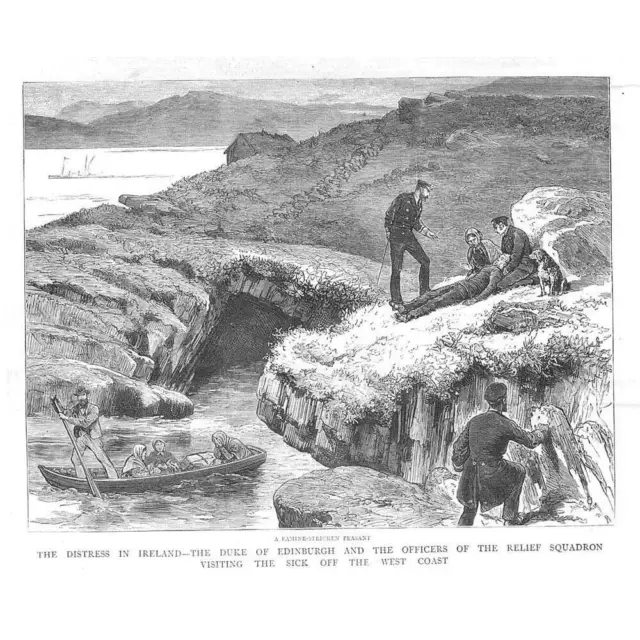
IRELAND A Famine Stricken Peasant - Antique Print 1880
£9.99 Buy It Now 14d 18h
Populations of Turkish Armenia. Turkey. Sketch map 1885 old antique chart
£9.99 Buy It Now 6d 18h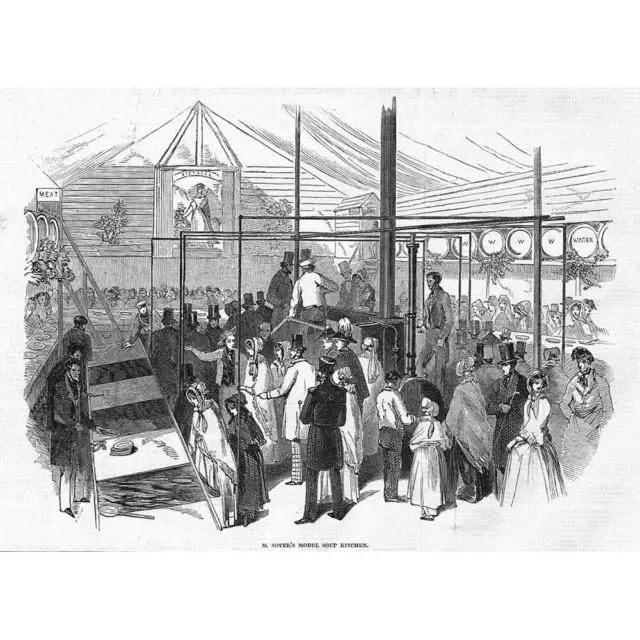
IRELAND The Famine; M.Soyer's Model Soup Kitchen at Dublin - Antique Print 1847
£9.99 Buy It Now 9d 19h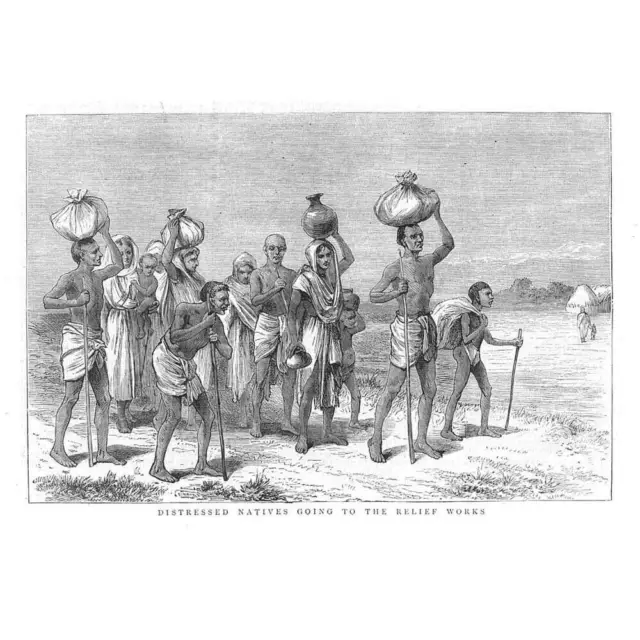
INDIA The Famine in Bengal Natives Going to Relief Works - Antique Print 1874
£9.99 Buy It Now 14d 18h
RUSSIA The Famine: Dispensing Soup at Alexander Nevsky Convent - Old Print 1892
£9.99 Buy It Now 10d 17h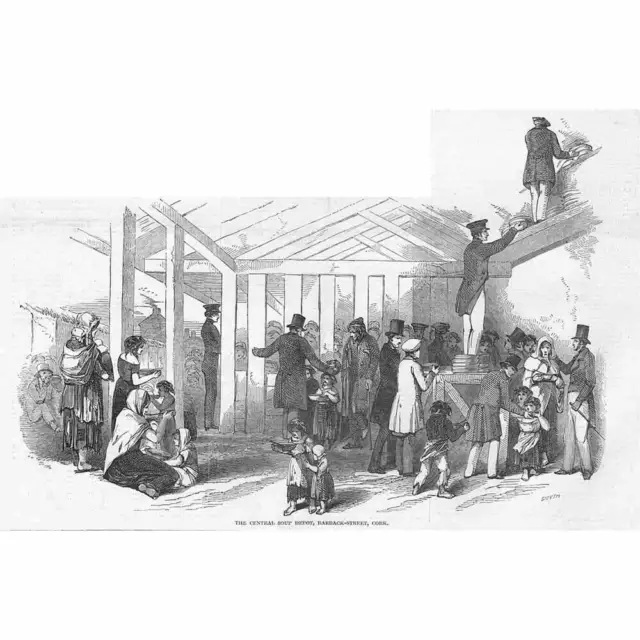
IRELAND The Famine; Central Soup Depot Barrack Street Cork - Antique Print 1847
£9.99 Buy It Now 9d 19h
The Mardin Hills. Diyarbakir. Turkey. Sketch map 1885 old antique chart
£9.99 Buy It Now 6d 18h
BAHRI PASHA Governor of Van (Armenia/Turkey) - Antique Print 1895
£5.99 Buy It Now 14d 18h
Reclus C1880 Antique Print. Famine Victims, India
£12.00 Buy It Now 14d 21h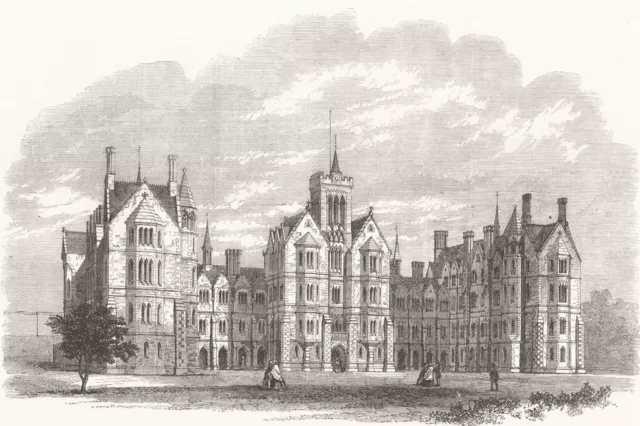
LANCASHIRE. Cotton Famine. Ripley's Orphanage, Lancaster 1864 old print
£8.99 Buy It Now 17d 20h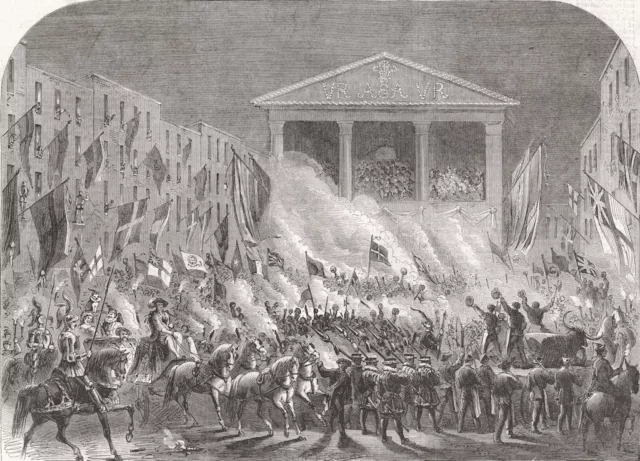
LANCASTER. Cotton Famine. Parade by Torchlight 1863 old antique print picture
£4.99 Buy It Now 17d 20h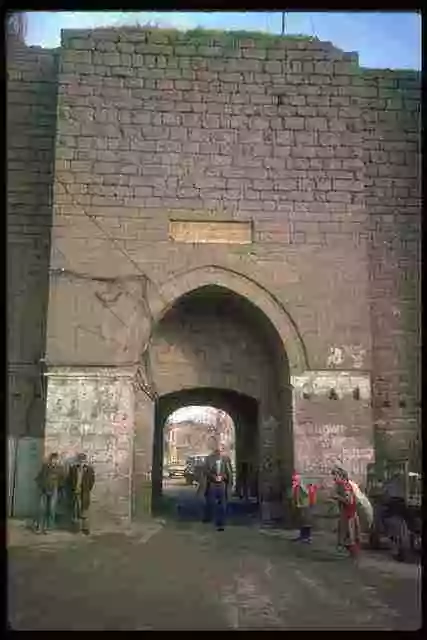
098033 Old Gate Of Major Kurdish Center Diyarbakir Turkey A4 Photo Print
£8.99 Buy It Now 11d 11h
1862 engravings Cotton famine, school for mill operatives, Manchester
£3.00 Buy It Now 24d 21h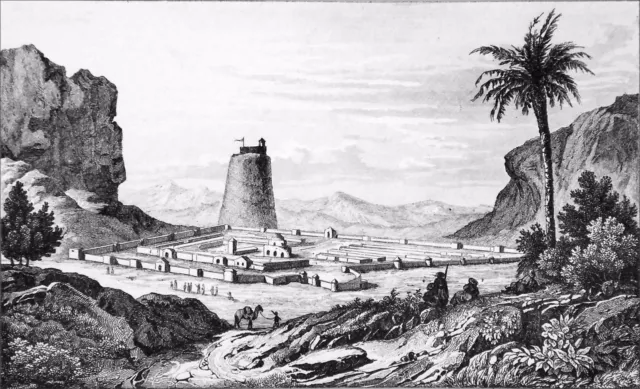
TURKEY (OLD ARMENIA) - BITLIS & massif of Kavuşşahap in the 19th -Engraving 19th
£15.78 Buy It Now 30d 2h
INDIA. Famine Victims c1885 old antique vintage print picture
£6.99 Buy It Now 19d 15h
LANCS. Cotton Famine. Alexandra Park, Oldham 1865 antique print picture
£9.99 Buy It Now 17d 20h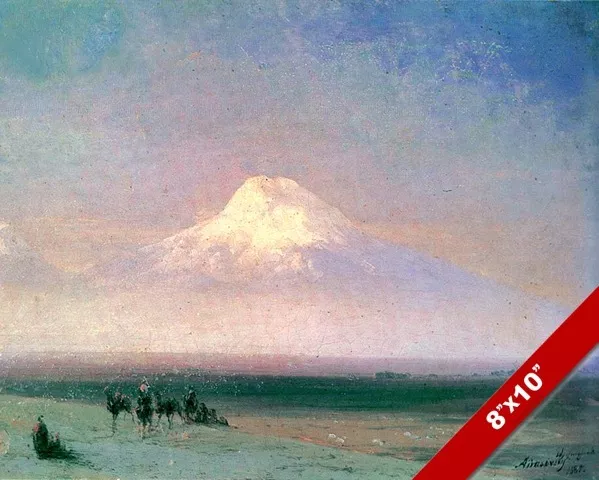
Valley View Mt Ararat Turkey Armenia Noahs Ark Painting Art Real Canvas Print
£14.34 Buy It Now 14d 1h
Tartar Women Of Erivan (Yerevan), Armenia, Book Illustration (Print), c1880
£15.97 Buy It Now 18d 23h
1862 Three Antique Engravings - Lancashire Cotton Famine - Manchester Poverty
£14.35 Buy It Now 12d 1h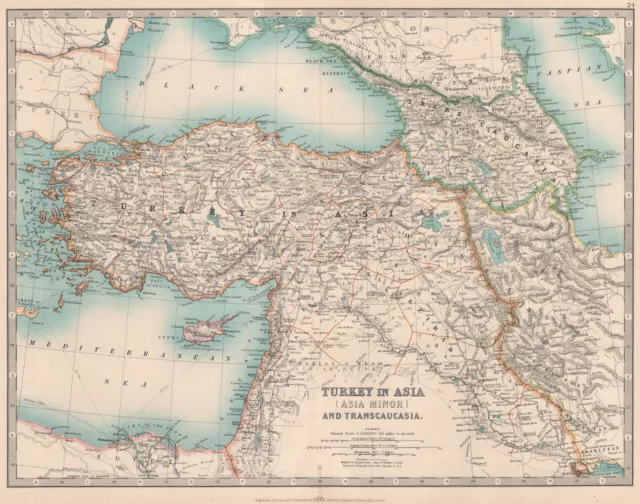
TURKEY IN ASIA & TRANSCAUCASIA. Asia Minor Georgia Armenia. JOHNSTON 1912 map
£16.00 Buy It Now 17d 15h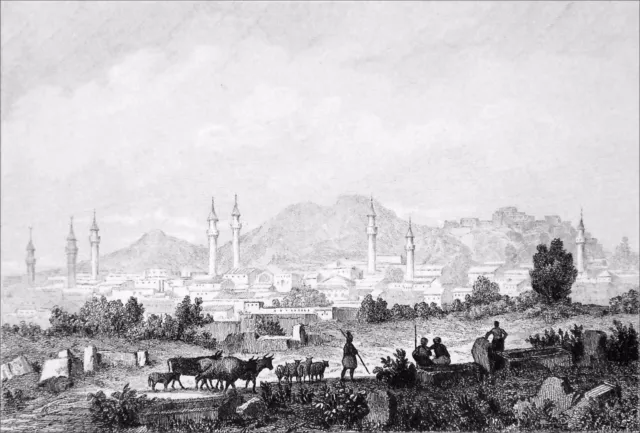
TURKEY (OLD ARMENIA) - ANKARA (ANGORA) in 19th century - Engraving from 19th
£19.13 Buy It Now 18d 13h
TURKEY (OLD ARMENIA) ANKARA- Inside the Monument of AUGUSTE -Engraving from 19th
£19.13 Buy It Now 18d 14h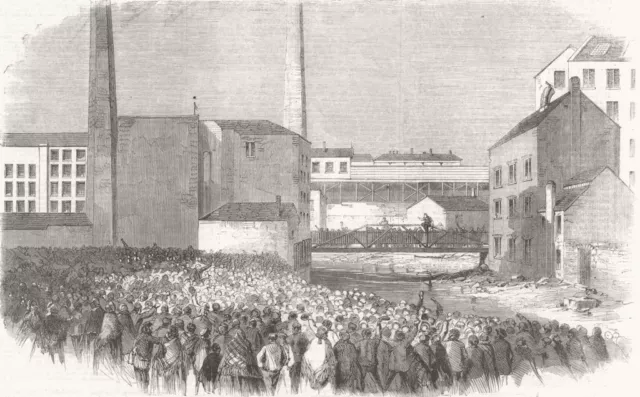
LANCS. Famine. Protest, Johnson's Mill, Stalybridge 1861 old antique print
£12.99 Buy It Now 17d 20h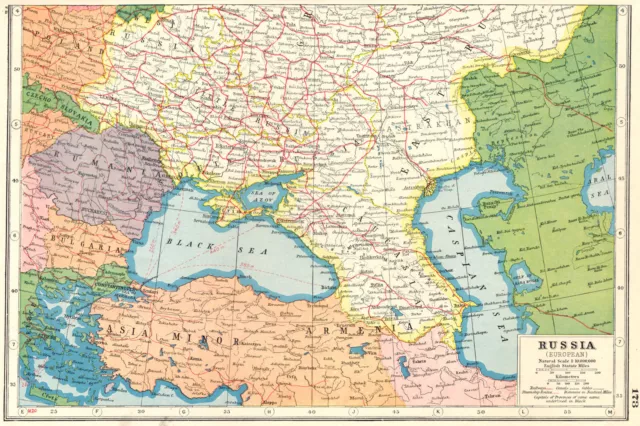
UKRAINE. Caucasus Romania Turkey Georgia Armenia Azerbaijan 1920 old map
£18.00 Buy It Now 22d 20h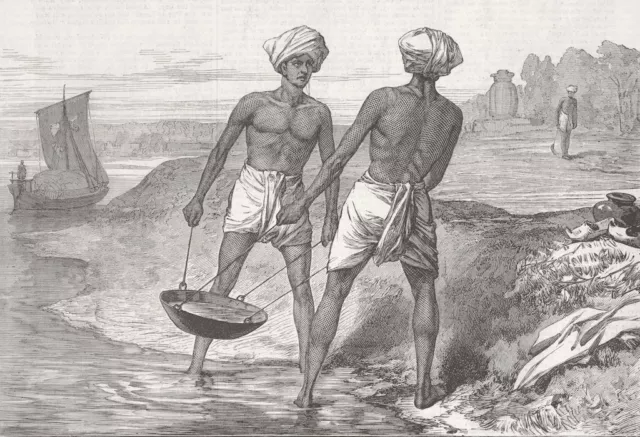
INDIA. Famine, Bengal. Indian mode of irrigation 1874 old antique print
£11.99 Buy It Now 17d 20h
TURKEY (old Armenia) - View of ERZEROUM - Fine engraving from 19th century
£19.13 Buy It Now 19d 3h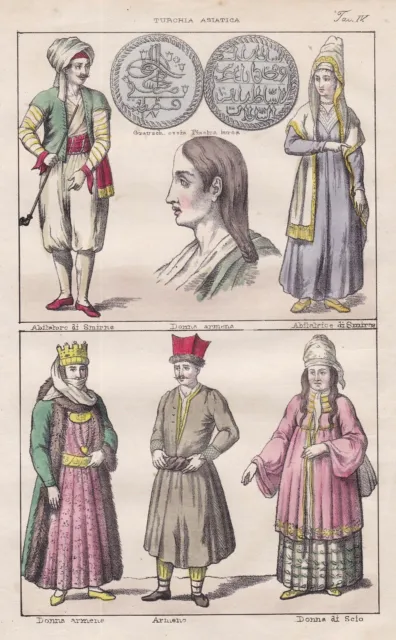
Izmir Armenia Turkey Türkei Trachten costumes costume Lithographie 1840
£12.01 Buy It Now 29d 1h
Antique c. 1900 Original Engraving Print Police Eviction Irish Potato Famine
£9.94 Buy It Now 11d 0h

